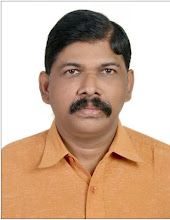Only 12.7% elementary schools in India comply with the minimum quality norms of the RTE Act. While nothing is more important to ensuring quality education than the availability of adequate number of professionally qualified, trained and motivated teachers, a third of India’s schools (34.4%) lack the statutory number of teachers and a fifth (18.5%) of all teachers lack professional qualifications.
Ironically, while India’s poor struggle to access the minimum quality of education, nine Indian billionaires own as much as the bottom 50%. In an economy reeling from a slowdown, most of the growth is being appropriated by the top 1%. On last count, the wealth of India’s billionaires is more than India’s national budget. More can be done to redistribute this wealth to ensure that India’s super-rich pay their fair share of taxes to contribute to national development.
At the heart of the problem is the fact that while billionaire wealth soars, education suffers from chronic underfunding or being outsourced to private companies that exclude the poorest people. More funds are needed to train and hire qualified teachers, ensure that schools are well-run, that there are sufficient teaching and learning materials, and adequate infrastructure. While marginalised social groups such as Dalits, Adivasis and Muslims are overwhelmingly dependent on public education, government funding for its own schools has remained woefully inadequate.
India’s spending on education has hovered at under 4%, despite successive governments’ electoral commitment to spending 6% of its GDP on education. While the draft New National Education Policy commits India to spending 20% of the budget on education, recent news suggests that a cut of 3,000 crore is anticipated in this year’s budget, instead of a much-needed and anticipated increase. Quality inputs are needed to improve quality of education and this cannot happen without a significant increase in investment.
India’s chronic financial neglect of the education sector is in sharp contrast to countries at a comparable level of development which have written financial commitments to education into law. Thus, Brazil’s constitution binds the Union to spend no less than 18% of its budget on education; Argentina and Mexico’s RTE legislation explicitly bind these governments to invest 6% and 8% GDP on education. Constitutions of Philippines and Vietnam provide that the State shall give priority to investments in education. A similar level of commitment is missing in India.
This historic failure in turn results in chronic neglect of quality. Research suggests that quality depends on the availability of good teachers, of good curricula plus teaching and learning materials, and the development of appropriate, formative assessment. This includes timely provision of sufficient quality textbooks — which must be relevant — as well as other teaching and learning material.
In contrast, India’s textbooks arrive chronically late, if at all. For example, it is now over two years since the distribution of textbooks in government schools has been effectively halted, replaced with the transfer of funds to parental bank accounts. In the absence of books in the market to purchase with said funds, this means students spend a substantial part of the academic calendar without textbooks. Unsurprisingly, in the absence of print material in classrooms, reading levels are low.
What is particularly troubling, but perhaps not surprising, is the fact that this state of affairs is considered normal. India fails to ensure a universal system of schooling where all public schools are of a comparable standard. What India’s poor and marginalized need is policies to address the known barriers to school participation — abolition of school fees (especially at secondary level), attention to maintaining geographical distance (not closing low enrolment schools in remote tribal and Adivasi inhabited areas), and steps to address physical, financial, linguistic or communication-related barriers. Addressing these will also require, for example, appropriate teacher training, after-school support, multi-lingual intervention programmes, disability-specific accommodations and other interventions needed to level the playing field. It is important to focus on equity not just in relation to access, but also in relation to quality to ensure the best quality of teaching and learning, including incentives for teachers and inclusive teacher recruitment policies.
Instead, the government itself discriminates against poor children. The per child unit cost in government-run Kendriya Vidyalaya schools for Central Government employees in transferable jobs is Rs 27,000 per child, compared to Rs 7,613 and Rs 9,583 per child average cost in government schools of Uttar Pradesh and Bihar respectively. It is time that the government took action to ensure India’s Eklvyas studying in India’s government schools are no longer deprived of the same quality of education as India’s gilded elites. Only when India invests in the development of each child, irrespective of her caste, class and creed, will the government’s vision of realising the right to education for all be realised.
Amitabh Behar- CEO, Oxfam India

source https://www.freepressjournal.in/india/free-school-education-for-indias-latter-day-eklavyas






























0 comments:
Post a Comment